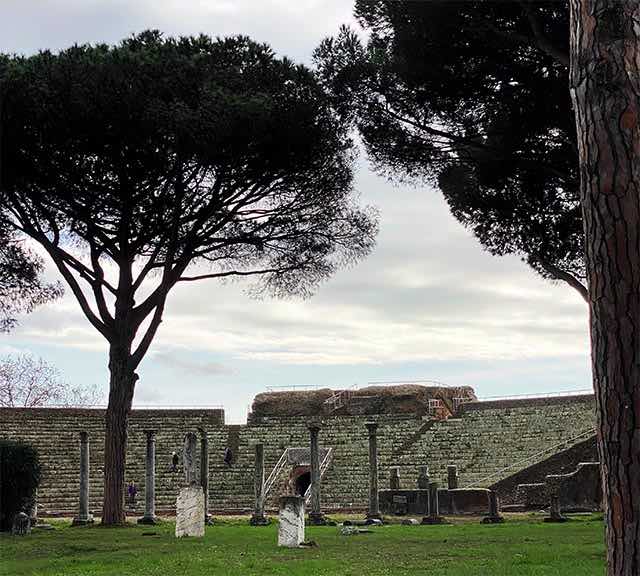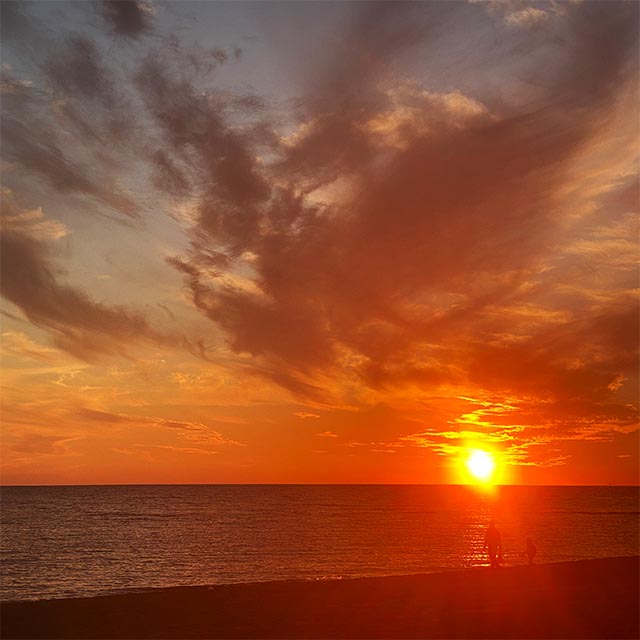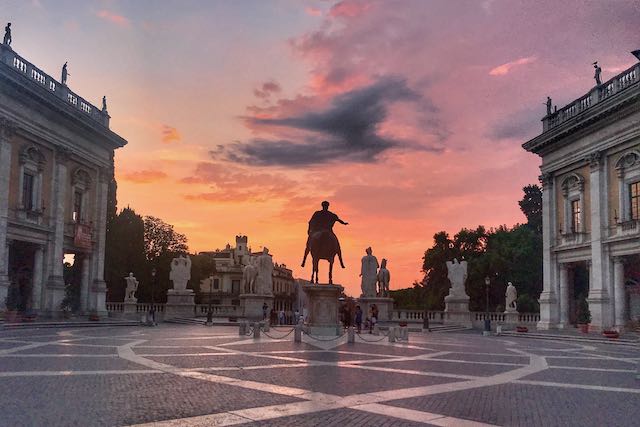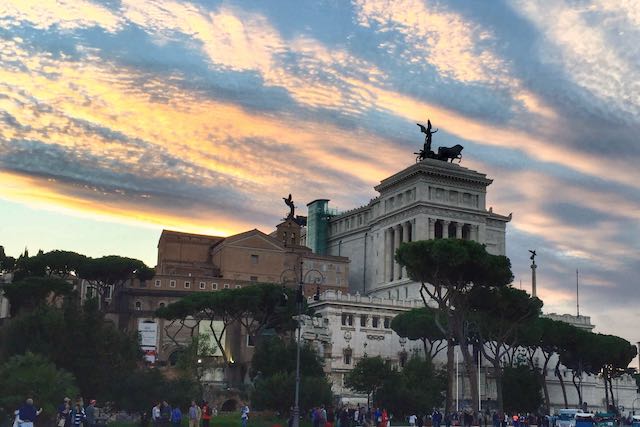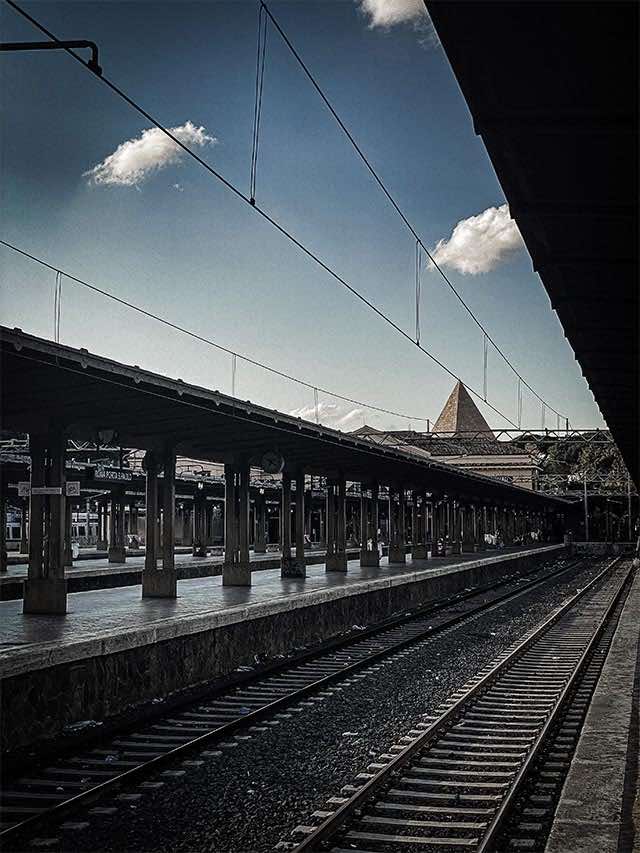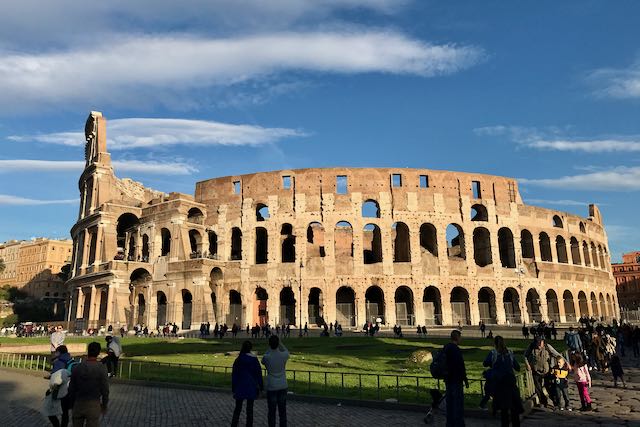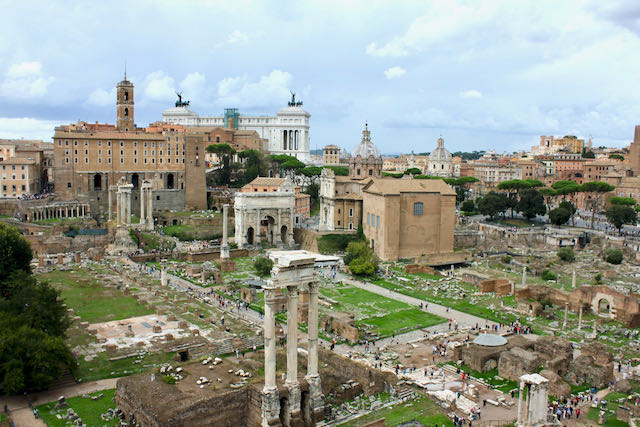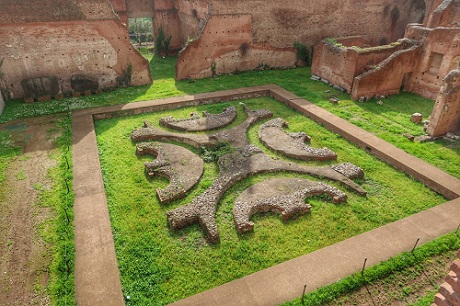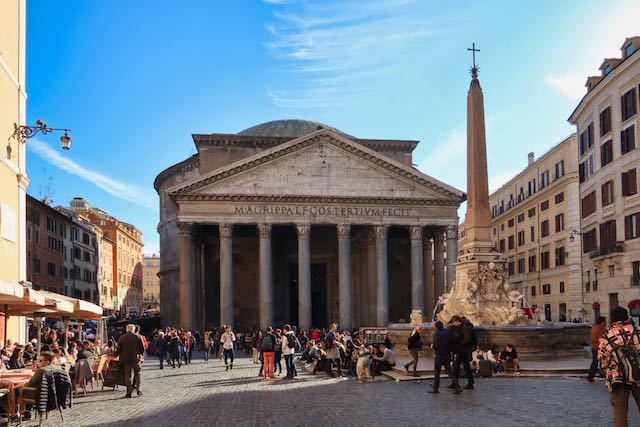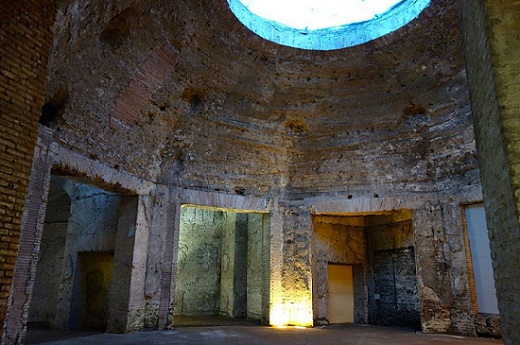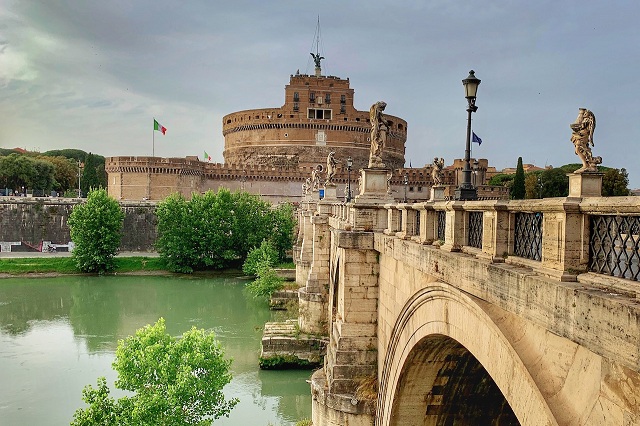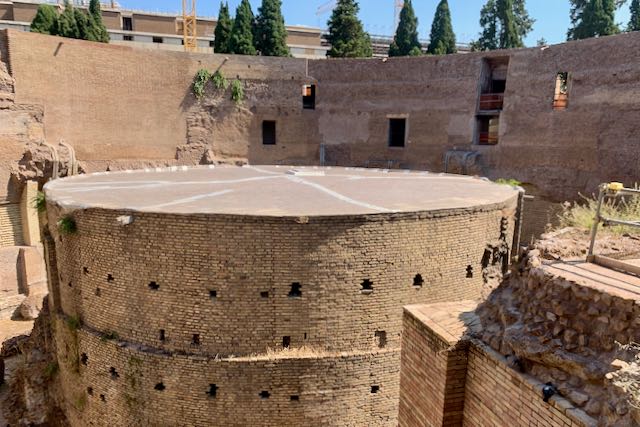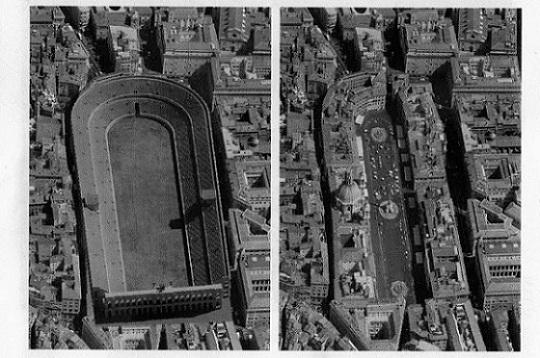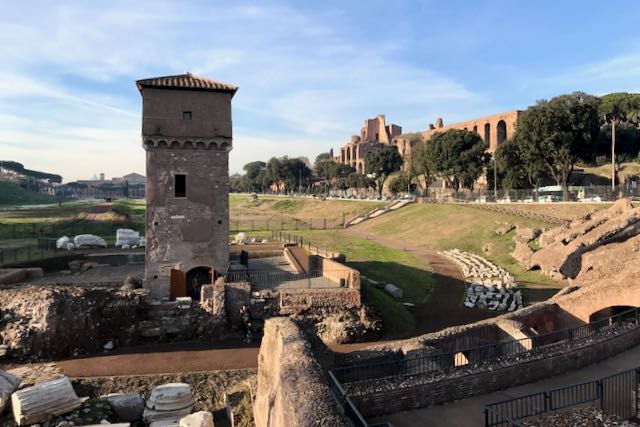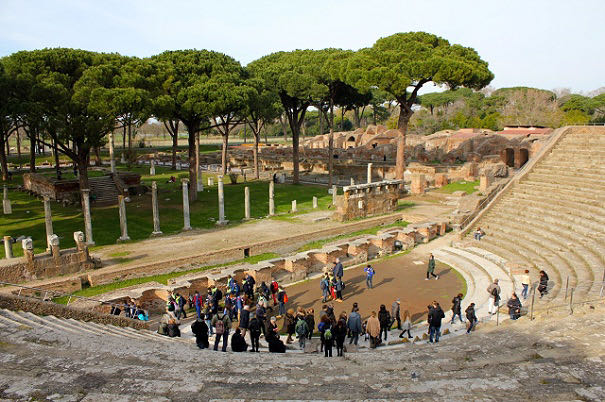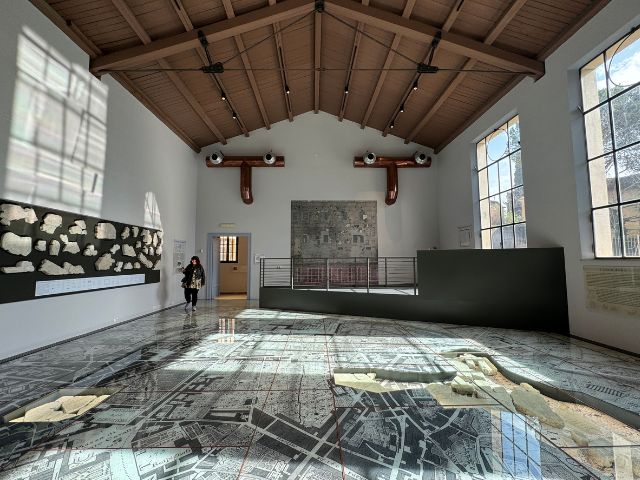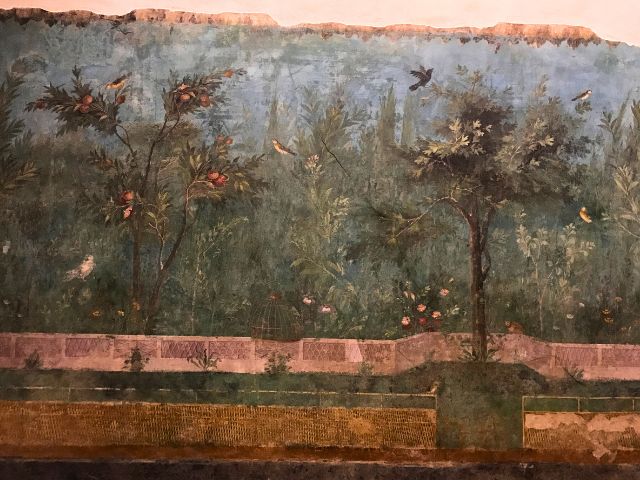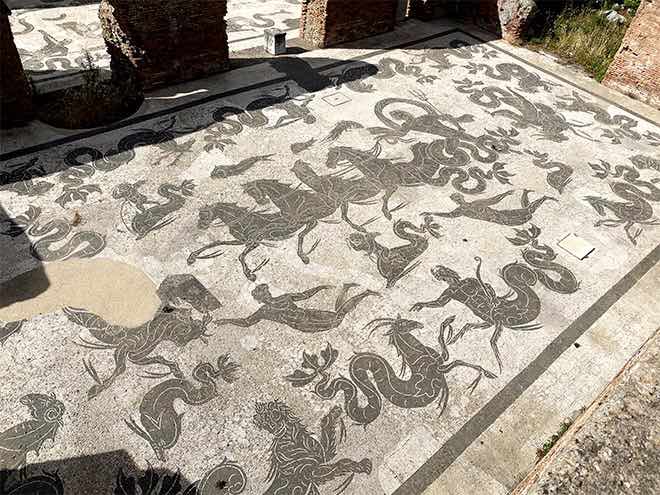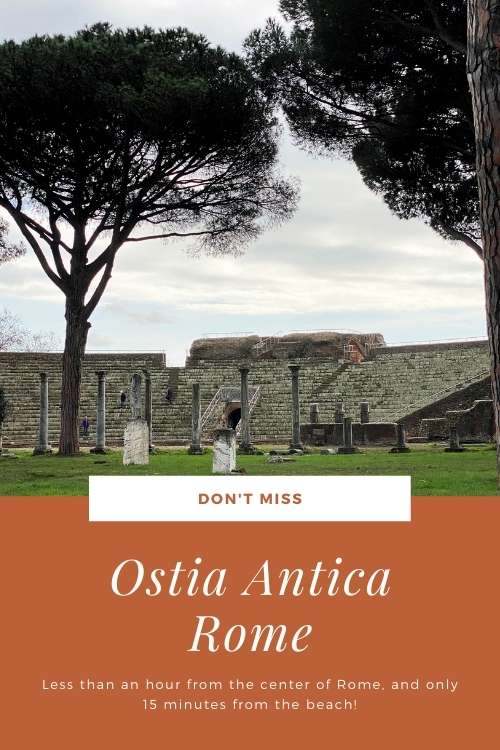- Sign up & get a FREE ebook Subscribe NOW!
- Romewise Home Page
- Ostia Antica Rome
Ostia Antica Rome
Explore the real ancient Roman town of Ostia Antica, just 30 minutes from the center of Rome, and on a par with Pompeii in terms of preservation and historical significance.
On this page you'll find:
- What is Ostia Antica?
- Why visit Ostia Antica?
- Where is Ostia Antica in Rome?
- When to visit Ostia Antica
- How to get to Ostia Antica in Rome
- How accessible is Ostia Antica?
- Is it possible to see Ostia Antica for free?
- What tickets and tours options are there, and which is right for me?
- What should you see in Ostia Antica?
- Where to eat and drink near Ostia Antica?
What is Ostia Antica?
There are two answers to this question –
The first is, Ostia Antica is a small town on the outskirts of Rome, inhabited by approximately 11,000 people.
This settlement grew up around the medieval castle of Pope Julius II (Castello di Giulio II) which was finished in 1486.
The second answer, and more common for visitors to Rome, ‘Ostia Antica’ refers to the sprawling archeological park containing the remains of the ancient town of Ostia.
It is the latter which is the focus of this page.
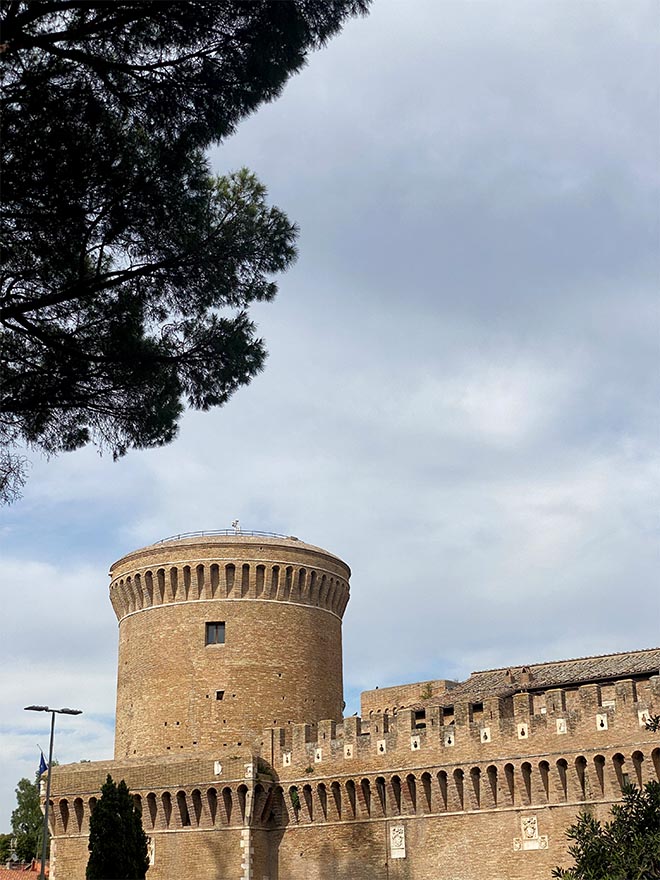 The Castle of Julius II as seen from the entrance of Ostia Antica Archeological Park
The Castle of Julius II as seen from the entrance of Ostia Antica Archeological ParkWhy visit Ostia Antica?
In my opinion, here are the top reasons to visit Ostia Antica:
- It is one of the best examples of an ancient Roman town in Italy – it’s possible to see the town’s layout, its business districts, entertainment venues and more, all in their original positions where they were constructed several hundred, if not thousands, of years ago
- It is located within 35 minutes of central Rome, with a direct train link that departs from Piramide station several times per hour
- Ostia Antica is just 10 minutes from Lido di Ostia, Rome’s official port of Ostia and home to a vibrant beach scene.
Where is Ostia Antica in Rome?
Ostia Antica - both the modern town and ancient ruins – are located approximately 22km (as the crow flies) from the historic center of Rome, in the city’s tenth municipality district.
When the ancient Romans founded Ostia they built their town along the banks of the river Tiber which connected Rome with the Mediterranean sea.
In the 2000 odd years since then, the course of the river has changed but it’s still not very far from the ruins or town – less than 500m in some places!
When is the best time to visit Ostia Antica?
Ostia Antica is open year round, but is closed on Mondays and on Christmas Day and New Year’s Day.
The park opens at 8:30 am in the morning, and closes at different times throughout the year, depending on the seasons – for full details, refer to the official site here.
Ostia Antica is predominantly an outdoor site, so make sure you come prepared.
While there are lots of trees throughout the park - providing much needed cover in the winter from rain, and shade in the summer – Ostia Antica is not far from the coast, and as such it is fairly exposed.
If visiting in the winter, I’d recommend wearing something warm, and absolutely bringing an umbrella in case of sudden rain showers.
No matter what season you visit Rome, here are 4 essential things we recommend never leaving home without:
Also, in the winter the majority of Ostia Antica’s famous mosaics are covered to protect them from the weather.
There is no fixed date in the calendar as to when the covers are removed, so if the mosaics are a draw for you, be sure to visit in the summer.
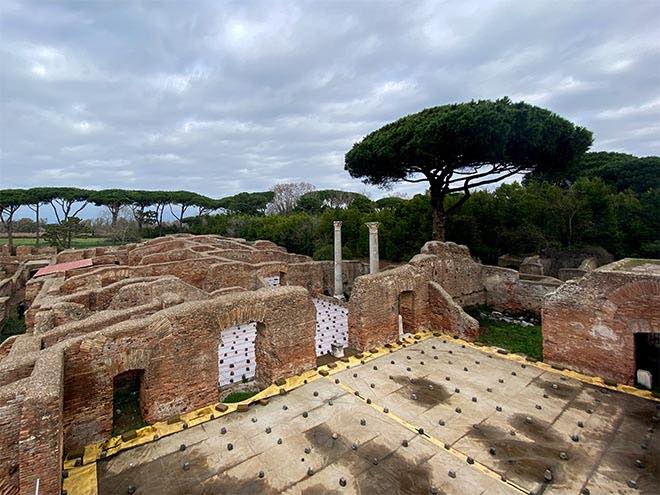 This photo shows the covers placed on the mosaics at the Baths of Neptune – for a photo of it uncovered, keep reading!
This photo shows the covers placed on the mosaics at the Baths of Neptune – for a photo of it uncovered, keep reading!If visiting in the summer, wear a hat and apply plenty of sun block – I learned my lesson the hard way when supporting an archeological dig on the outskirts of the park a few years ago during the hottest part of the year!
Visit our dedicated pages about what to pack for Rome for every month:
How to get to Ostia Antica in Rome
The easiest way to get to Ostia Antica is to take the ‘Lido’ train from Piramide station in central Rome – so called because ‘lido’ translates as ‘beach’ and two stops after Ostia Antica, you’ll find yourself within 5 minutes walking distance of the Mediterranean sea.
These trains run every 20 minutes on average, and the journey from Piramide to Ostia Antica takes around 30 minutes.
This train line is regularly being maintained and therefore I would recommend checking its status before setting off to Ostia Antica. The best place to get live public transport updates for this line is via the X account for Cotral (the company that manages a lot of Ostia's transport network) here.
As the Lido line is officially part of Rome’s metropolitan public transport network, you only need a regular 1.50€, 100 minute travel ticket (two tickets required for a round trip) – pretty good value in my opinion!
Make sure you have tickets ready for the return trip before you set off.
For more information about Rome’s public transport, visit our dedicated page here.
Another option is to drive to Ostia Antica – following Google Maps will take you directly to the park entrance where there is a large, completely free-of-charge car park.
How accessible is Ostia Antica?
Unfortunately, Ostia Antica is not the most accessible site for those with mobility challenges.
The principal routes through the park follow the same ancient roads that the Romans walked, and as such the surfaces are extremely uneven and all visitors should pay close attention to every step they take.
However, efforts are being made to improve this – along the main paths, some sections have been leveled (but consider these will be muddy in bad weather), and ramps have been installed to enable access in some of the more restricted areas.
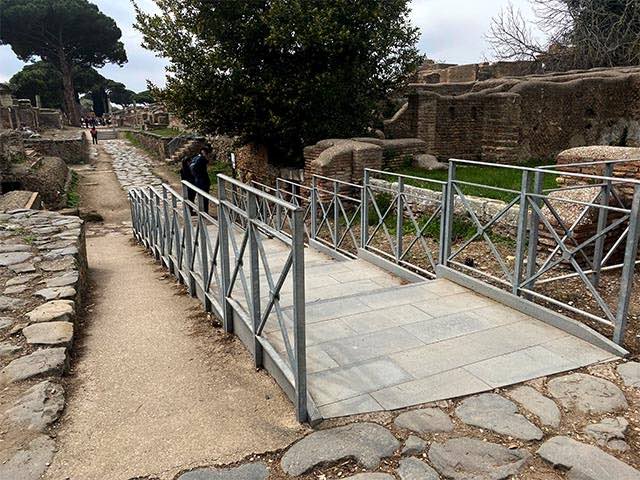 The main routes through Ostia Antica feature ramps and shallow staircases for improved accessibility, but these can become slippery in wet weather.
The main routes through Ostia Antica feature ramps and shallow staircases for improved accessibility, but these can become slippery in wet weather.There is also a modern road which runs along the edge of the park (but inside the park boundaries) which connects the ticket office and entrance area to the museum, bistro and toilets.
If the uneven surfaces of the ancient roads are proving difficult, I’d recommend using this road to see the site – it provides some great views of some of the main monuments (and direct access to the theater area) with none of the stress of traversing the ancient paving.
You do not need permission to access this road but do consider that vehicles use it in conjunction with the site management.
The perfect 3-day itinerary in Rome
Trying to figure out how to organize your visit to Rome? I've got the perfect 3-day itinerary for first-time visitors (or those who have not been here in a while.) It works for a 2.5 day visit as well.
In my 3-day itinerary, you'll see all the major must-see Rome attractions like the Vatican, Colosseum, Trevi Fountain, Pantheon, Piazza Navona, Spanish Steps, and much more.
And if you have more time, or want suggestions for extra/other things to do, you'll find that there too.
Visit my page with the best 3-day itinerary in Rome for first-timers.
Is it possible to see Ostia Antica for free?
Yes - sometimes!
On the first Sunday of every month visits to Ostia Antica are completely free of charge for everyone – no catches!
Most of the significant monuments are in the center of the park, and as such you can only catch fleeting glimpses as you pass in a car or on the train, so this is not a site that can be seen from outside.
The archeological park is vast, nestled between the Tiber river, the train line between Rome and the coast at Ostia Lido, and Via del Mare – one of the main roads from Rome to its beaches.
The one notable exception is the ancient synagogue of Ostia – this can be seen pretty clearly from the SR296 road connecting Ostia Antica town to the Fiumicino area (near the main Rome airport).
It is not possible to stop on this road to view the synagogue but if you are passing, keep an eye out!
If you are looking to save money on the entrance cost to Ostia Antica, there are a few ways to do this:
- You can use the Roma Pass or other City Pass to access the site without paying for a separate ticket – of course, you will have paid for the Roma Pass already (it cannot be purchased at Ostia Antica) so consider this when redeeming your ticket. Note that you can only use the digital version of the Roma Pass at Ostia Antica, not the physical version.
- Check the official website where information about discounts and concessions for certain people are detailed
- Purchase the ‘fidelity’ card, providing unlimited access to the site for a full year (more about this below)
Explore other sites from Ancient Rome
What tickets and tours options are there, and which is right for me?
Unlike a lot of sites in Rome, ticket options for Ostia Antica are very straightforward.
You have two options:
- A standard entrance ticket costs 18€ (this increases in the case of special exhibitions or events) which provides entrance to the archeological park and museum (if open) for the day of purchase. Discounts and concessions are available under certain circumstances – be sure to check the official website before visiting.
- A ‘fidelity’ card can be purchased for 40€ (25€ for anyone under 25) which provides unlimited access to the site for one year. If you are staying in Rome for an extended period or visiting here multiple times in a 12 month period, this is an absolute must – you only need to visit three times to make the cost worth it!
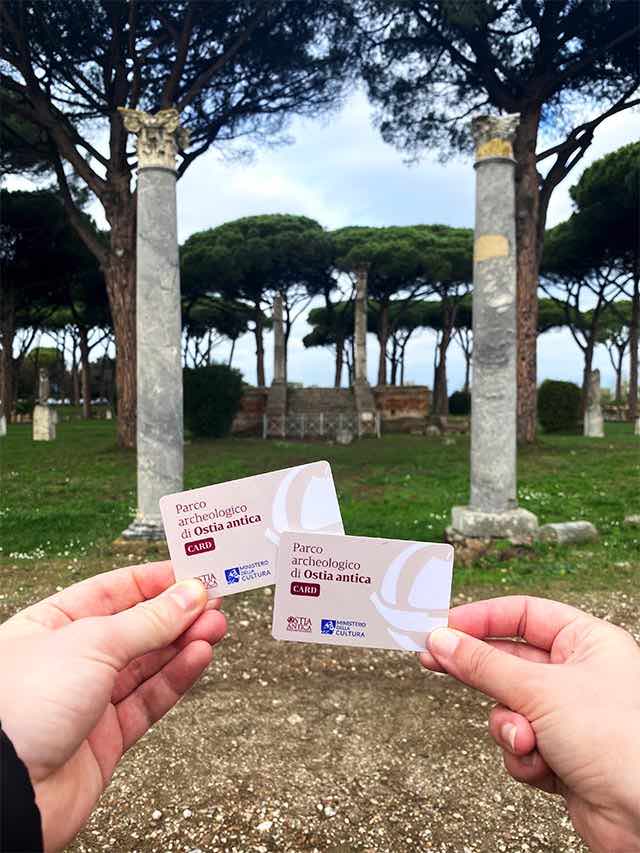 Myself and my girlfriend bought our fidelity cards in January and they had already paid for themselves by March!
Myself and my girlfriend bought our fidelity cards in January and they had already paid for themselves by March!One of the things I love most about Ostia Antica is the freedom you have when visiting to explore the site – few areas are off limits, and you’ll find clear information boards throughout.
It is very easy to spend a full day at Ostia Antica, and because of the size of the site, not see everything!
If you have limited time, or want to see the main monuments, you should consider joining a tour or hiring a private guide.
Ancient Ostia guided tours or private guide will ensure you get a complete experience at Ostia Antica, without finding yourself lost in the sprawling ruins.
🏛️ From Ancient Ruins to the Beach 🏖️
Explore the ruins of Ostia Antica to see remnants of daily life from centuries ago, then visit a volcanic beach for a unique coastal experience!
What should you see in Ostia Antica?
As I mentioned previously, Ostia Antica is a huge site where you could easily spend a whole day and still have things left to see!
To help, I have put together the following list of monuments to visit – I have ordered these so you can visit them sequentially from the park entrance and by following the information boards present everywhere.
Following this itinerary will enable you to see a lot of the park, but if you want to explore further and see it all, there’s nothing stopping you apart from closing time!
Ready to plan your trip?
Book your train
Planning to travel between cities in Italy and other parts of Europe?
Use Trainline to see all the different options available across the different rail companies.
Find your hotel
Find your perfect place to stay in Rome.
Use Booking.com to choose between hotels, guesthouses, and self-catering apartments in neighborhoods throughout the Eternal City.
Buy your TurboPass
Purchase the convenient Turbopass and visit all of Rome's top attractions including the Colosseum, Pantheon, and Vatican.
With one handy pass, it's all included.
Porta Romana (Roman Gate)
When you first enter Ostia Antica, you’ll have a long ancient Roman road in front of you, with ruins along the side – here you are walking along the original road into town.
The ruins at the side of the road are those of funerary monuments and tombs – in ancient Rome, the deceased were placed outside of the inhabited areas.
(Read more about the catacombs of Rome here.)
The first main monument you’ll come to is the ancient gate to the city, which now isn’t that impressive when compared to some of the other sites in the park, but it’s a great place to ground yourself and begin your visit.
💀 Walk Through Ancient Ruins and Catacombs 💀
Uncover ancient history with these fascinating tours!
Visit the captivating ruins of Ostia Antica and explore the mysterious catacombs along the Appia Antica, for a journey back in time.
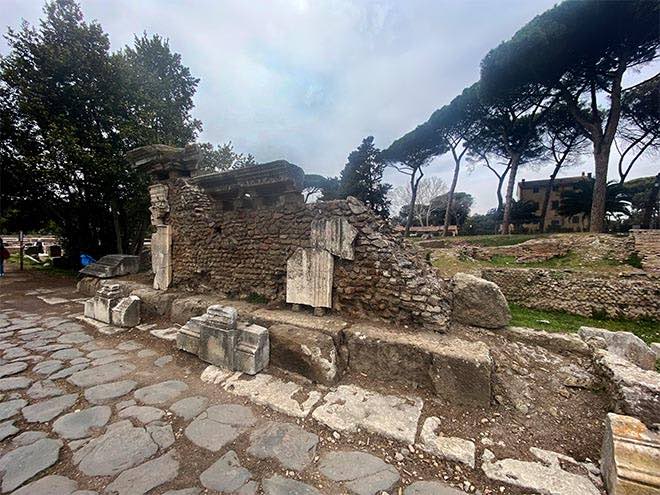 It might not seem that impressive, but the Roman Gate of Ostia Antica is significant as it marks the official start of the ancient town.
It might not seem that impressive, but the Roman Gate of Ostia Antica is significant as it marks the official start of the ancient town.Baths of Neptune
This will be the first of many ancient bathing complexes you’ll visit in Ostia Antica if you endeavor to explore the full site.
What makes this monument particularly special is the huge and incredibly well-preserved mosaics, the most famous of which depicts the god Neptune being pulled through the sea on a quadriga (four-animal chariot) of seahorses.
Theater of Ostia
Maybe the most iconic monument in Ostia Antica, this well preserved theater would have been a focal point of life in the ancient town.
Restoration works provide a sense of the original size of the theater, and it is even still used today for open air events!
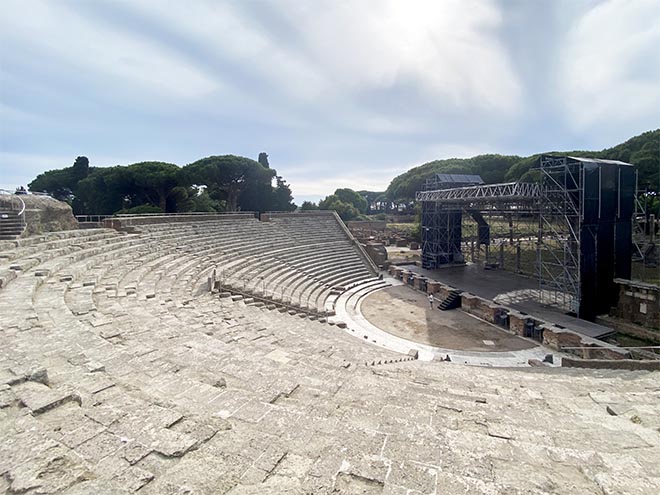 Old meets new – Ostia Antica regularly hosts entertainment events in the ancient theater, particularly in the summer.
Old meets new – Ostia Antica regularly hosts entertainment events in the ancient theater, particularly in the summer.Piazza of the Corporations
So called because each square building along the three sides of this piazza featured different businesses – recognizable now by the floor mosaics that distinguish the specialism of each trader.
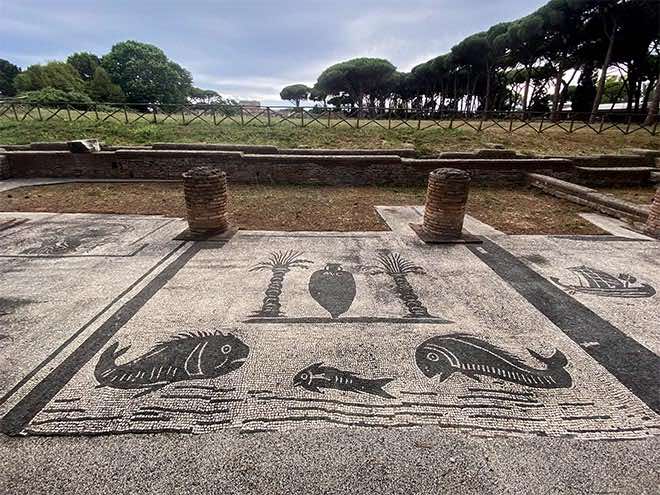 My favorites are the various mosaics displaying fish – these were sellers of different kinds of fish, no different than today’s food markets!
My favorites are the various mosaics displaying fish – these were sellers of different kinds of fish, no different than today’s food markets!Disclosure: If you make a purchase through a link on this page, I may receive a small commission - at no extra cost to you. Thank you for supporting my site!
Thermopolium of Via di Diana
Located in the area between the museum and capitolium/forum (more about this below) you’ll find a maze of ruined structures, most of which would have had commercial businesses on the ground floor, and residences above – a lot like a modern city today!
Look out for the sign ‘THERMOPOLIVM’ – in this building you’ll find an ancient inn and bar – evident from the counter, storage amphorae, outdoor patio with fountain, and even a wall fresco advertising this business’ particular specialities of vegetables, cheeses, and eggs.
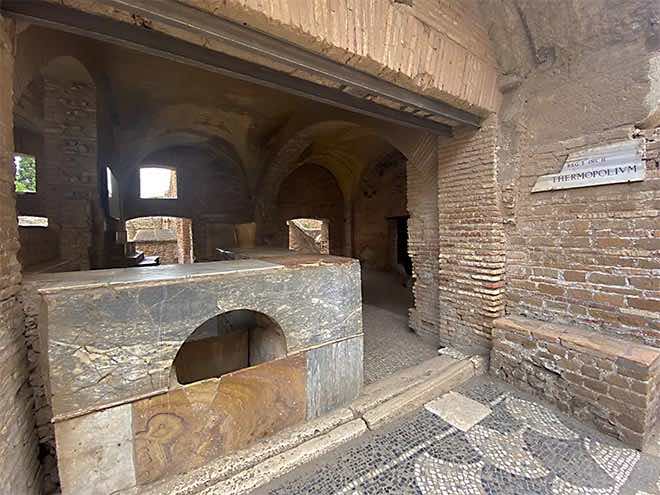 What would you like to order today?
What would you like to order today?Capitolium & Forum
Ostia was likely Rome’s first colony, and as such it became a city-building blueprint for the ancient Romans.
When you arrive in the capitolium area, you can easily make out the famous layout for Roman towns where the forum was at the center, and roads split off into the separate districts.
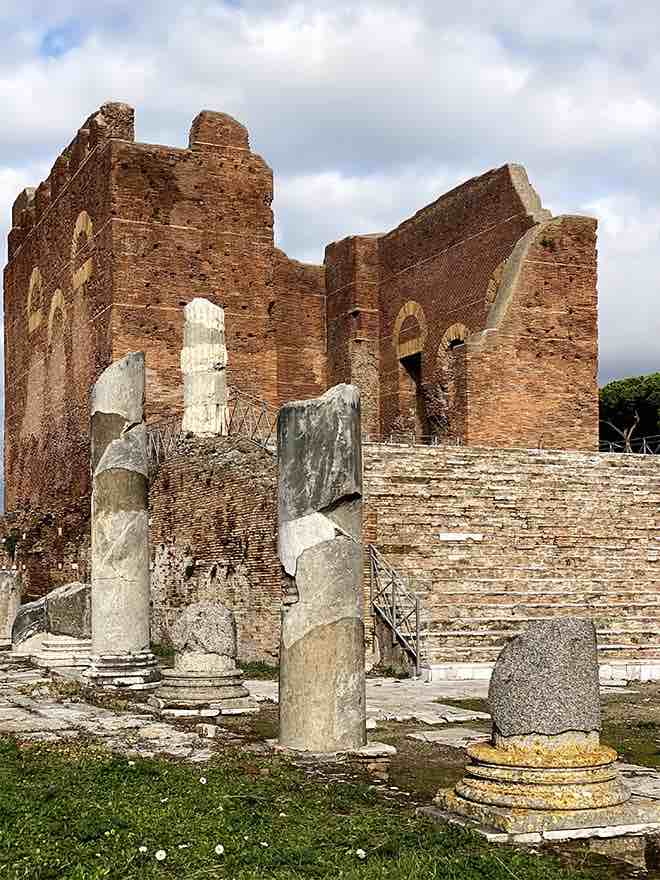 Here you can see the ruins of the ‘capitol’ temple, of which now just the central structure survives – imagine in ancient times this building having an ornate outer layer of decorative columns!
Here you can see the ruins of the ‘capitol’ temple, of which now just the central structure survives – imagine in ancient times this building having an ornate outer layer of decorative columns!Temple of Roma & Augustus
Directly opposite the main temple in the capitolium are the ruins of the Temple of Roma and Augustus – this temple was jointly dedicated to Rome’s first emperor, and the deified version of the city of Rome.
The footprint of the building can be seen in situ still, and if you look to the side where a small staircase is located, you can see a series of decorative fragments that were found at the site and remounted here to demonstrate how the exterior of the temple would have looked.
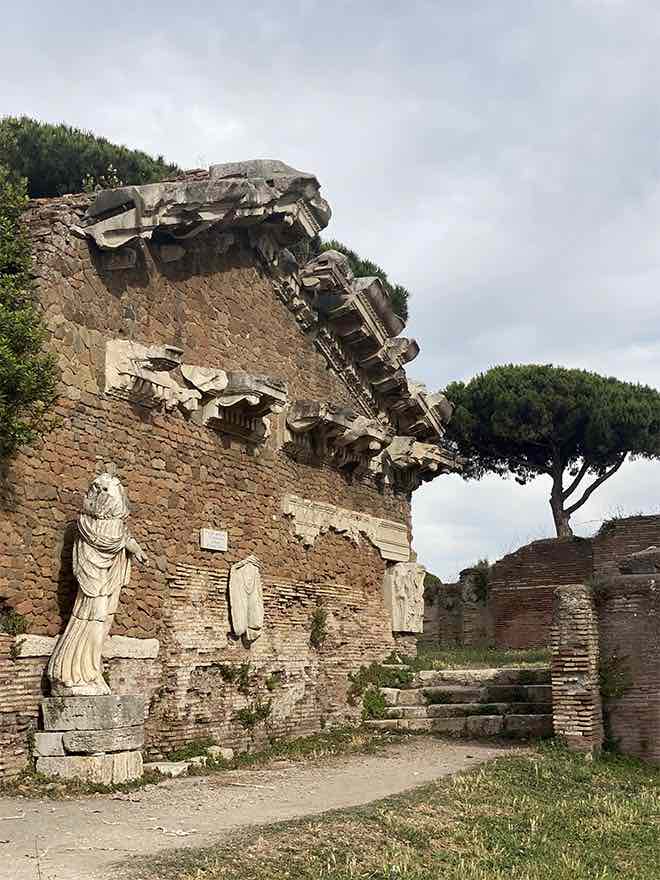 Note the fragments of marble decoration from the temple exterior, along with exquisite statuary.
Note the fragments of marble decoration from the temple exterior, along with exquisite statuary.Fountain with Lucerna (Fontana con Lucerna)
Moving on from the forum area and following the course of the Decumanus Maximus road towards the synagogue (more on this below), you’ll come across an ancient fountain at the side of the road – no longer providing water unfortunately!
While not imposing or large, this small water-feature provides a glimpse into what the streets of Ostia Antica would have looked like – adorned with ornate fountains and other decorative but practical features, a hallmark of Roman colonies.
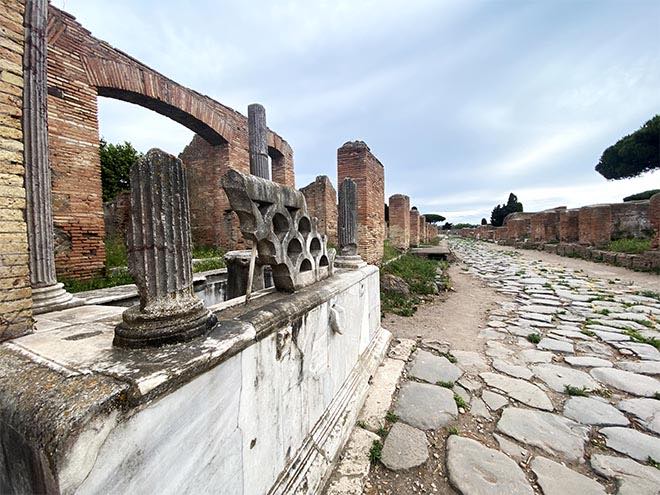 This fountain is actually a newer model of an earlier design, constructed during the time of Hadrian to ‘monumentalize’ this part of the street.
This fountain is actually a newer model of an earlier design, constructed during the time of Hadrian to ‘monumentalize’ this part of the street.Synagogue
The ancient synagogue at the very edge of the archeological park is worth the walk; it is the oldest synagogue in Italy and shows the diversity of the ancient town.
Its location now is remarkably different to when it was built centuries ago – in ancient times, standing here would have meant you were very close to the sea, but geographical changes to the land and river means the coast is now approximately 2.5km away!
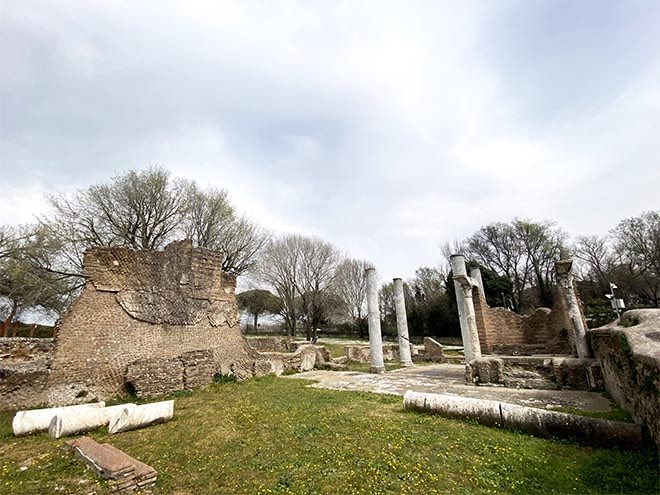 Not many tourists make it this far, so you will likely find yourself visiting this incredible monument by yourself.
Not many tourists make it this far, so you will likely find yourself visiting this incredible monument by yourself.Where to eat and drink near Ostia Antica
Within the archeological park you'll find a small cafe/bistro serving simple dishes, hot and cold drinks and Italian classics such as spritzes.
This bar is located in the center of the park, where you'll also find the gift shop, a set of toilets and a couple of vending machines.
There are also drinking water fountains near the theater.
The park is located on the outskirts of the modern town of Ostia Antica.
From the entrance of the park, if you head towards the castle (it’s impossible to miss!), you will find yourself in the medieval ‘borgo’ (village) of Ostia Antica.
Within this area there are a number of great places to eat and drink, but my absolute favorite is L’Alimentari, located at Piazza Umberto I, 6 – they have an ever changing menu of daily specials, all prepared fresh using local ingredients, as well as a wide range of classic pastas, pinse and panini, and GREAT coffee!
I’d recommend grabbing a table outside if the weather permits, where you’ll have a great view of the medieval walls of Ostia Antica, peppered throughout with ancient Roman stone fragments.
 If you visit L'Alimentari, be sure to order some of their local fried specialities - you won't be disappointed
If you visit L'Alimentari, be sure to order some of their local fried specialities - you won't be disappointedRomewise's Top Travel Resources
Ready to book your trip to Rome? Take a look at these helpful links to companies we use and trust:
- Keep your travel spending simple with the Wise card, which removes all the worry about exchange rates and high transaction fees all over the world
- Search for and book your perfect accommodation
- Our complete guide to what to pack for Rome
- The number one travel accessory, a multi-point travel adapter and voltage converter
- Browse a huge range of tours in Rome and beyond
- Experience unique tours and special access to Rome's most popular sights
- Protect yourself with comprehensive travel insurance
Within this post there are some affiliate links for products and services. For more details about our affiliate policy click here.
Get your 100% free Rome trip planner now!
Simply sign-up today for our free newsletter and get the Romewise Quick Start guide to Rome:
We are committed to respecting your data. Click for our Privacy Policy.
Comments? Questions? Suggestions?
Please come over to the private Romewise Facebook group and join in the conversation.
You will often find me there, happy to answer your questions / comments!
You will also meet other Rome lovers and experts, too.
What are you waiting for?
- Romewise Home Page
- Ostia Antica Rome

